West Virginia Union Soldiers and Sailors Memorial
Introduction
Text-to-speech Audio
Images
Union Soldier and Sailors Memorial.
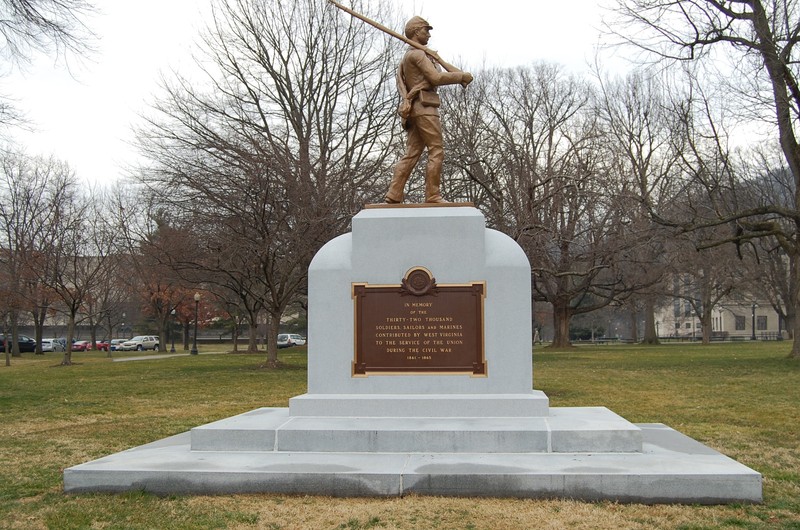
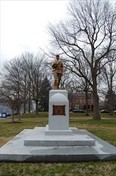
The plaque that states the date the memorial was erected and contains the names of the members of the Union Soldiers and Sailors Memorial Commission who erected it.
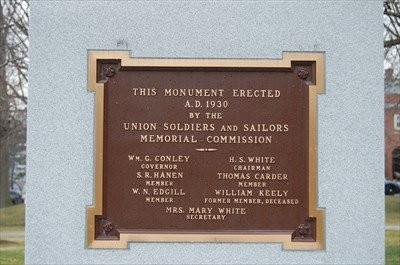
The plaque that states Abraham Lincoln's Gettysburg Address.
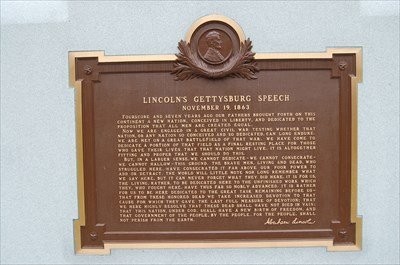
The plaque that states the admission of the State of West Virginia to the Union on June 20, 1863.
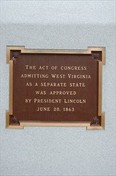
WV Union Soldier .
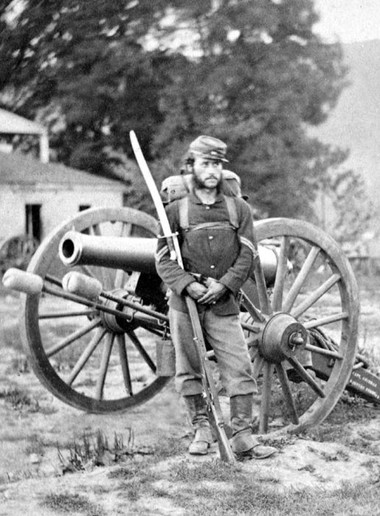
Backstory and Context
Text-to-speech Audio
Some of the first battles of the Civil War occurred in West Virginia, though it remained part of Virginia prior to 1863. On June 3, 1861, Union General George B. McClellan pushed back Confederate Colonel George A. Porterfield’s forces from Phillipi, a major railroad connection to the entire northwest region of the state. This battle was possibly the first land battle of the Civil War and established space for the Wheeling convention to convene and debate the issue of West Virginia’s statehood. On August 18, 1861, there was an attempt to capture a U.S. armory in Harpers Ferry by Confederate forces. In 1862, Confederate General Thomas “Stonewall” Jackson captured the town of Romney, a chokehold on the B&O Railway that ran through the Shenandoah Valley region. Romney would be contested for throughout the war, and captured by both sides over 56 times.
When Virginia voted to secede from the Union on April 17, 1861 delegates of the western region of the state mostly voted against secession, but as the war began most of them returned to Richmond and signed the ordinance of secession.(1) About a dozen Unionist delegates would later organize the Restored Government of Virginia and choose Francis H. Pierpont as their leader. On October 24, 1861, there was an election held in western Virginia to create a new state if the voters approved. The returns were low with 18,408 votes in favor. Historian Otis Rice wrote- "Although the Wheeling Intelligencer professed to see an 'astonishing unanimity' in the sentiment of the vote, in reality the returns reflected the deep division of feeling in western Virginia and intimidation on the part of supporters of the new state."(2) Mineral, Grant, Lincoln, Summers, and Mingo were not a part of the original formation of West Virginia and were created by the state legislature after the Civil War.
The United States Constitution states that in order for a new state to form, the approval of the mother state must be met. But since the Reformed Government of Virginia was legitimized by President Abraham Lincoln himself, the new state was able to appoint itself statehood. West Virginia, though known as a Union state, remained divided amongst itself. West Virginians in Union and Confederate service found themselves fighting each other in battles in both eastern and western Virginia. Although West Virginia was credited with 32,000 Union soldiers, the George Tyler Moore Center for the Study of the Civil War at Shepherd University conducted an individual soldier count and determined that West Virginia had given about equal numbers of men to both Union and Confederate service, around 20,000 men to each side.(3) The overestimation of Union soldiers was due to the inclusion of large numbers of Ohio and Pennsylvania volunteers as well as re-enlistments counted as new soldiers.
In 1927, the WV Legislature created a Soldiers and Sailors Memorial Commission. This commission planned the memorial building on the Capitol grounds as a monument in recognition of the estimated, at that time, 20,000 to 36,000 men of the state who fought for the Union in the Civil War. The memorial was dedicated in 1930 to the memory of the Union soldiers and sailors from the State of West Virginia in the Civil War.
The state set aside funds in the amount of $15,000 for the project. Two other Civil War monuments on the Capitol grounds, the Stonewall Jackson and Mountaineer statues, were both paid for by private funds. A New Martinsville, WV monument firm was awarded the contract. Little is known about the artist of the statue, Roy H. Stewart.
The Union Soldiers and Sailors monument (USSM) depicts a Home Guard soldier carrying a musket and marching east toward the Stonewall Jackson statue in the southeast corner of the capitol grounds. The USSM has four plaques affixed to its base. One commemorates the dedication of the memorial and contains the names of the members of the Union Soldiers and Sailors Commission who erected the memorial. The second plaque contains a transcript of Abraham Lincoln's Gettysburg Address. The third plaque commemorates the admission of the State of West Virginia to the Union on June 20, 1863, as follows: "The Act of Congress admitting West Virginia as a separate state was approved by President Abraham Lincoln. June 20, 1863." The final plaque is inscribed: "In Memory of the thirty-two thousand soldiers, sailors and marines, contributed West Virginia to the service of the Union during the Civil War. 1861 - 1865."
Sources
The Civil War in West Virginia, Legends of America. January 1st 2020. Accessed February 18th 2020. https://www.legendsofamerica.com/civil-war-west-virginia/.
The Civil War in West Virginia, West Virginia Department of Arts, Culture, and History. January 1st 2019. Accessed February 18th 2020. http://www.wvculture.org/history/archives/wvcivilwar.html.
Cohen, Stan & Richard Andre, Capitols of West Virginia: A Pictorial History. Charleston, WV: Pictorial Histories Publishing, 1989.
Deacon, Sneakin. West Virginia Civil War Memorial - Charleston, West Virginia. Waymarking. March 25, 2010. Accessed June 19, 2019. http://www.waymarking.com/waymarks/WM8FE1_West_Virginia_Civil_War_Memorial_Charleston_West_Virginia.
Snell, Mark A.. Civil War, The West Virginia Encyclopedia. December 13th 2016. Accessed February 18th 2020. https://www.wvencyclopedia.org/articles/1193.
Riecks, Chuck. "Charleston WV: State Capitol Grounds: Union Soldier Statue." Flickr. com, May 29, 2010, Accessed June 19, 2019, https://www.flickr.com/photos/chuckandaliceriecks/4650966763.
West Virginia Statehood, West Virginia Department of Arts, Culture, and History. January 1st 2019. Accessed February 18th 2020. http://www.wvculture.org/history/archives/statehoo.html.
West Virginia Veterans Memorial. West Virginia Department of Arts, Culture, and History. Accessed June 18, 2019. http://www.wvculture.org/history/wvmemory/wvvets.html.
1. How Virginia Convention Delegates Voted on Secession, April 4 and April 17, 1861, and Whether They Signed a Copy of the Ordinance of Secession, Accessed February 6th 2021. https://www.virginiamemory.com/docs/votes_on_secession.pdf.
2. Rice, Otis, and Stephen W. Brown, "West Virginia, A History", Second Edition, University Press of Kentucky, 1993, pg. 140
3. Snell, Mark A., "West Virginia and the Civil War", History Press, 2011, pgs. 28-29
https://www.legendsofamerica.com/civil-war-west-virginia/
